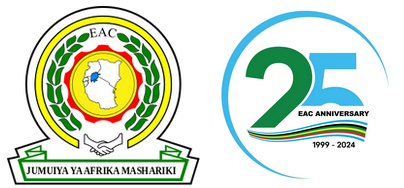
Biodiversity
East Africa is well endowed with a variety of ecosystems that provide varied services, as well as habitats for a wide range of species.
The EAC‘s role and mandates on biodiversity conservation are provided under Chapter 19 of the Treaty for the establishment of the East African Community.
Four of the eight biodiversity hotspots in Africa are found in the EAC and are located at shared trans-boundary sites where they are critical for regionally migratory species. These hotspots are:
-
Eastern Afromontane biodiversity hotspot (Rwanda, Uganda and the DRC);
-
Coastal Forests of Eastern Africa biodiveristy hotspot (Kenya and Tanzania);
-
three
- four
The Mountain Gorilla (Gorilla beringei beringei) for example lives in the Eastern Afromontane biodiversity hotspot in Rwanda, Uganda and the DRC. All four biodiversity hotspots are biologically rich, yet threatened areas due to illegal wildlife trade, habitat loss and fragmentation, overexploitation of plant and animal species, pollution, introduction of alien invasive species, exploration and extraction of oil and gas, climate change and genetic erosion.
The impact of these pressures on biodiversity especially in shared trans-boundary ecosystems makes a regional biodiversity strategy and action plan particularly valuable for ensuring complementary approaches to biodiversity conservation in the EAC.
Burundi has 13 protected areas covering 100,000 ha of land. About 172,000 ha (or 6.7%) of Burundi is forested. These ecosystems harbour an estimated 2,500 higher plant species, 145 bird species, 107 mammal species, 79 reptile species, 18 amphibian species and 5 fish species.
The Kenyan coastline is characterised by a rich diversity of flora and fauna, including fish, coral reefs and mangrove forests. The rangelands are composed of a number of habitat structures ranging from open grasslands to closed woody and/or bushy vegetation with varying amounts and composition of grass cover and species.
Rwanda’s location at the heart of the Albertine Rift eco-region in the western arm of Africa’s Rift Valley makes it one of Africa’s most biologically diverse regions. It is home to some 40% of the continent’s mammal species (402 species), a huge diversity of birds (1,061 species), reptiles and amphibians (293 species), and higher plants (5,793 species).
South Sudan is home to the world’s second-largest land mammal migration, including species of global importance, such as Nubian giraffe, lion, elephant, hippopotamus, and others. Its 22,000-kilometer Sudd wetland – one of the largest freshwater ecosystems in the world – contains many endangered mammalian species, antelopes, millions of migratory birds, and enormous fish populations.
Tanzania has a diverse spectrum of fauna and flora, including a wide variety of endemic species and sub-species. The biological diversity and degree of endemism consist of primates (20 species and 4 endemic), antelopes (34 species and 2 endemic), fish (with many endemic in Lake Victoria, Tanganyika and Nyasa and other small lakes and rivers), reptiles (290 species and 75 endemic), amphibians (40 endemic), invertebrates and plants (around 11,000 species including many endemic).
Uganda has a rich array of natural resources which include water and wetlands, biodiversity, fisheries, forestry, land resources, wildlife, and minerals among others. The country has more than 5,000 plant species along with 345 mammals, 1,015 birds, 165 reptiles and 43 amphibians.
It is estimated that nearly 50% of the continent’s tropical rainforests lie in the DRC (IUCN, 1992), covering approximately 62% of the territory with a high rate of endemism. Some of the spectacular species found there include the Okapi (Okapia johnstoni), the eastern lowland gorilla (Gorilla beringei) and the Bonobo (Pan paniscus).
